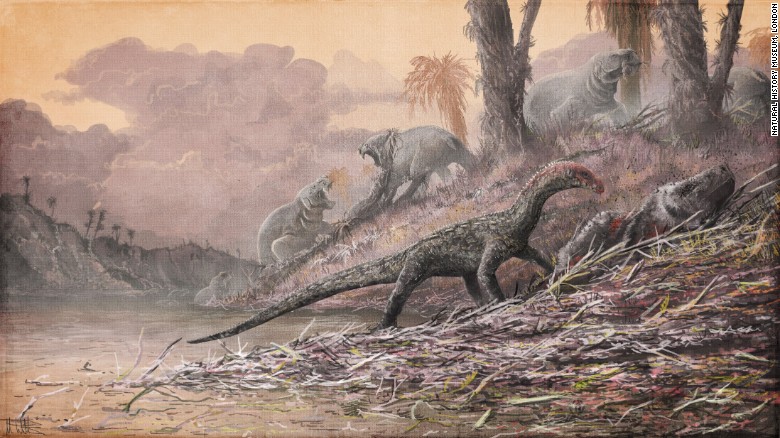An early dinosaur that walked on four legs like a crocodile has been found in Tanzania. Paleontologists unearthed the Teleocrater, which lived thousands of years before the known dinosaurs.
The Teleocrater was between 7 and 10 feet long (2-3 meters), it was carnivorous, and it lived around 245 million years ago during the Triassic Period. Researchers also found that he walked like a crocodile. The findings were published April 12 in the journal Nature, and it was conducted by a group of paleontologists and scientists from around the world.

“This is a little animal that we call Teleocrater. It’s not very big… it probably would have weighed about the same as the average family dog,” said Prof. Paul Barrett, from London’s Natural History Museum and one of the authors of the paper, according to BBC.
The Teleocrater was small and had crocodile-like ankles
Barrett told the BBC that the dinosaur might have looked like a souped-up version of the Komodo dragon, crossed with something else. For Barrett, the animal would have been slender, not big and armored like a crocodile.
Previous to the Teleocrater finding, paleontologists believed that early dinosaurs could have looked like small dinosaurs with two legs. Scientists have long tried to discover the dinosaurs’ ancestors, but seeing as there are significant gaps in fossil records in the period before dinosaurs emerged in mid-Triassic Period, they hadn’t been able to discover it. However, with the finding of the Teleocrater, previous theories regarding dinosaurs’ predecessors are discarded.
Teleocrater rhadinus existed just after a group of animals known as archosaurs divided into a branch that later evolved into dinosaurs and another branch that led to the alligators and crocodiles we know today. The archosaurs evolved into pterosaurus, dinosaurs and millions of years later into birds.
The Teleocrater’s anatomy has features that were present in the last common ancestor of the two branches, like crocodilian-like ankle joint and some other features considered dinosaur-like.
More research is needed regarding the Teleocrater
The first fossils from the Teleocrater were found in 1933 in Tanzania, and they were studied in London’s Natural History Museum in the 1950s. However, those fossils were missing crucial bones, including the ankle. Consequently, scientists who studied the fossils could not tell whether the Teleocrater was related to crocs or dinosaurs.
The new fossils were unearthed in 2015, and the state of the remains helped scientists figure out where the Teleocrater came from.
“The discovery of Teleocrater fundamentally changes our ideas about the earliest history of dinosaurs relatives,” said Sterling Nesbitt, lead author of the study and vertebrate paleontologist at Virginia Tech in Blacksburg. “It also raises far more questions than it answers.”
The Teleocrater, along with other pre-dinosaur relatives, lived in several regions, from Russia to India and Brazil. The team expects to continue research on the animal, and they plan to return to Tanzania to look for more remains and missing pieces of the skeleton.
Source: BBC
